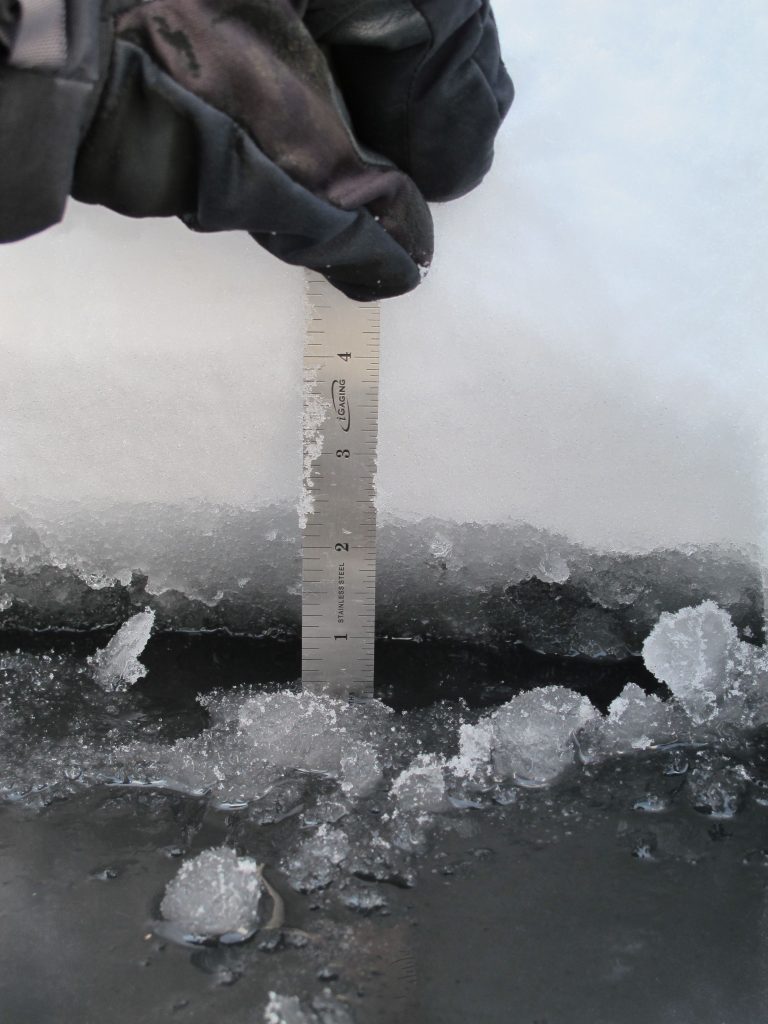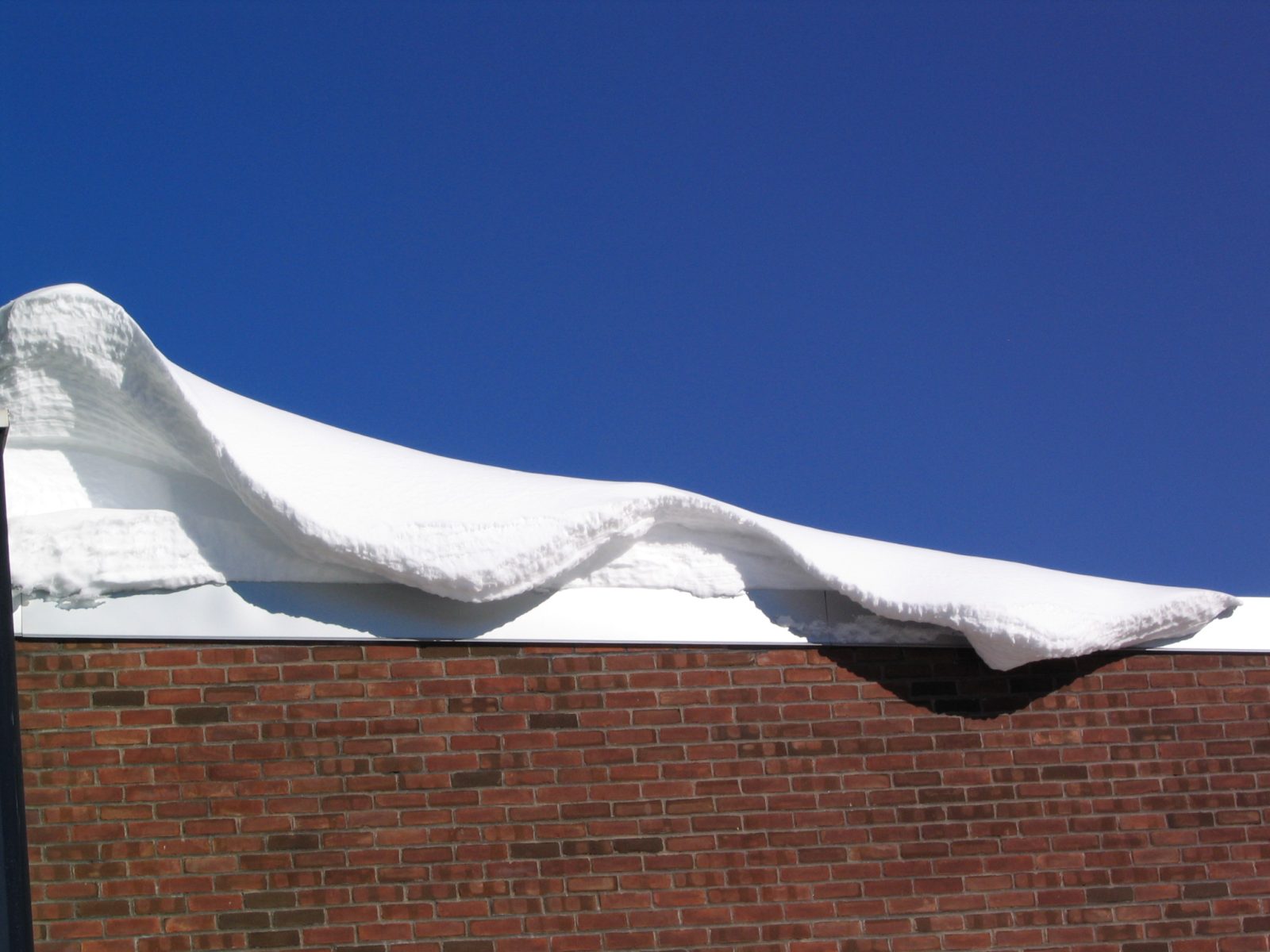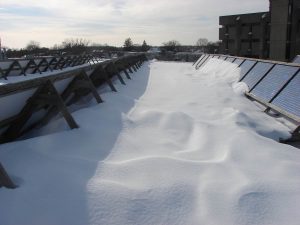Evaluating Snow Loads on Structures

During winter months, snowstorms can blanket colder areas with snow and ice in amounts that typically do not adversely affect building structures and infrastructure. However, unusual weather patterns that combine sequences of frequent storms with cold temperatures before and after these storms can damage roof structures and cause roof failures.
The trajectory of New England nor’easters can create a dangerous cycle of heavy snow followed by strong northerly or northwesterly winds. In cold temperatures, snow is relatively light and prone to transport by the wind. Winds during and after nor’easters can create accumulations as the snow drifts against roof obstructions, such as rooftop air handling units, rising walls, or other changes in elevation. In these instances, it is important to understand how drifting snow loads affect roof structures, and to develop an ongoing maintenance plan to remove snow when necessary.


Assessing the snow load on a roof requires more than merely measuring its depth.
Evaluating Snow Loads on Roofs
Assessing the magnitude of snow loads on a roof after a storm, or after a series of storms, requires an understanding of the degree to which the snow has consolidated. Snow densities can vary from values as low as 5 pounds per cubic foot (pcf) for freshly deposited light and fluffy snow to as high as 40 pcf for wet frosty snow. Snow packs can even have ice at the bottom formed from a combination of melting from building heat and the weight of the pack. Since snow densities vary as deposited and snow compacts over time, assessing the snow load on a roof requires more than merely measuring its depth. Accurately determining the snow load on a roof requires weighing representative samples of the full depth of the snow pack and extrapolating the measured conditions to the observed accumulations.
- Snow on roof structure
- Varying densities throughout thickness of snow pack
- Roof failure under snow load
Developing Snow Removal Plans
A good snow removal plan includes several critical elements.
- Reviewing original building construction documents and documentation of any subsequent alterations. Structural engineers use structural drawings, specifications, and construction submittals to gather information about loads used to design the structure, the strength of the structural members, and the capacity of the connections between members. With this information, it is possible to also determine anticipated deflections of the structure under snow loads and help predict how certain interior finishes might be affected by the deflecting structure.
- Assessing the existing building structure. Construction documents are not always available. In those cases, project teams can document the configuration and condition of the existing structure, but this approach takes more time and can have limitations. In an occupied building, teams are often limited to easily accessible portions of the structure and must therefore rely on industry resources with the understanding of building vintages and risk factors to make assumptions about construction and material strengths. Additionally, the plan developers should understand the building’s risk factors, such as inadequate slopes to drains, insufficient roof drains or drains prone to clogging, latent construction deficiencies, decay or corrosion that could weaken structural members, non-engineered alterations, and additional dead loads beyond those originally intended. Mission-critical occupancies will require a more conservative approach than less critical ones.
- Understanding the structure’s robustness. It is important to understand a structure’s strength beyond its design capacity. Structural systems that have low margins of overstrength can be referred to as fragile systems. Conversely, those with larger margins are considered robust. The more robust the structure, the more forgiving it will be to an overload. The building code at the time of construction and type of structure are the two main variables that define the robustness of a structure.
- Ensuring safety during snow removal. Snow removal plans must be sensitive to the risks inherent to working on roofs. Among other things, gas lines, fall arrest anchors and lifelines, lightning protection systems, and photovoltaic arrays all pose challenges to snow removal and create tripping hazards to in-house personnel or contractors. Shallow skylights concealed by snow cover represent a serious hazard. Beyond roofs, snow removal plans must also consider other life safety implications in the aftermath of a storm. Snow removal plans should keep clear egress paths, fire control and pump room access, gas meters, and fire hydrants.
- Avoiding unnecessary costs. A snow removal plan equips facility owners and managers to make informed decisions when snow emergencies arise. Emergency snow removal and building shutdowns can be expensive. The cost of last-minute contracting for snow removal can spike regionally when frequent storms affect many facilities. A snow management plan will remove snow when its weight reaches certain thresholds defined for each structure, preemptively avoiding conditions in which any one storm can create an emergency. The development and execution of a snow removal plan should also be consistent with the requirements of applicable insurance policies.


